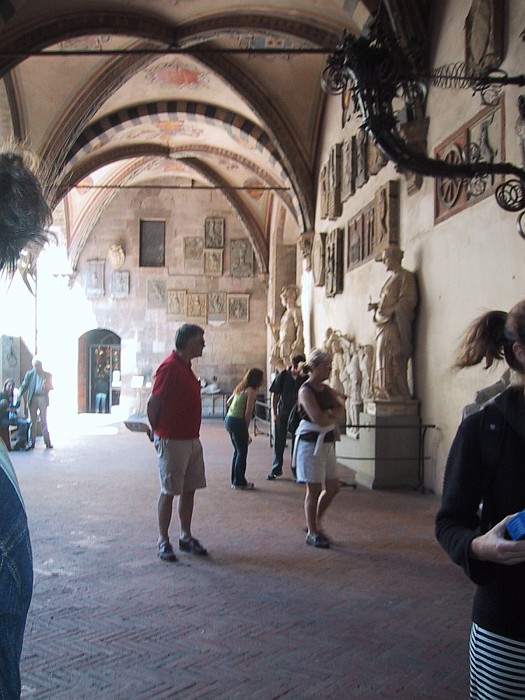(Italian pronunciation: bahr-jel-lo)
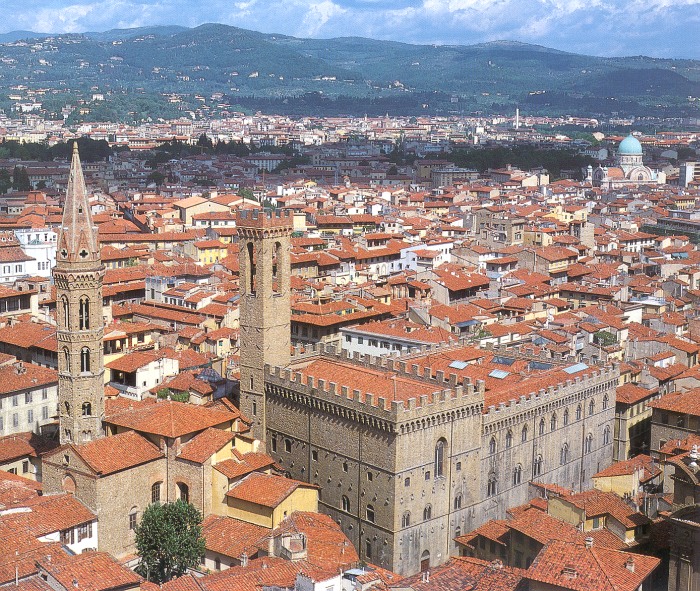

The National Museum Il Bargello has its setting in one of the oldest buildings in Florence and one of the most beautiful in Italy, which was begun in 1255. Initially the residence of the Bargello or head of police spies, from which it took its name, the building's use as a National Museum began in the mid-nineteenth century. What the Uffizi offers in painting, the Bargello offers in sculpture and its courtyard and interiors contain some of the masterpieces of the Tuscan Renaissance. It contains masterpieces by Brunelleschi, Michelangelo, Cellini, Giambologna and Donatello along with priceless ivories, enamels, jewels, tapestries and weapons.
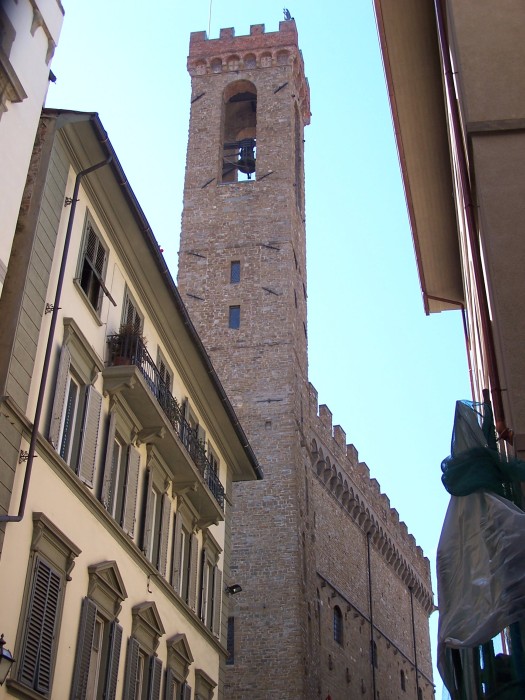
The Palazzo del Bargello is like a fortress with powerful embattlements surmounting the austere facade. Initially the headquarters of the Capitano del Popolo (Captain of the People) and later of the Podestà, the palace became, in the sixteenth century, the residence of the Bargello that is of the head of the police (from which the palace takes its name) and was used as prison during the whole 18th century. Its walls witnessed important episodes of civic history. It was the meeting place of the Council of the Hundred in which Dante took part. It witnessed sieges, fires, executions, the most famous perhaps being that of Baroncelli, involved in the Pazzi plot against the Medici, which Leonardo also witnessed. During the 14th and 15th century, the palace was subjected to a series of alterations and additions, still preserving its harmonious severity, best seen in the beautiful courtyard, the balcony and the large hall on the first floor.
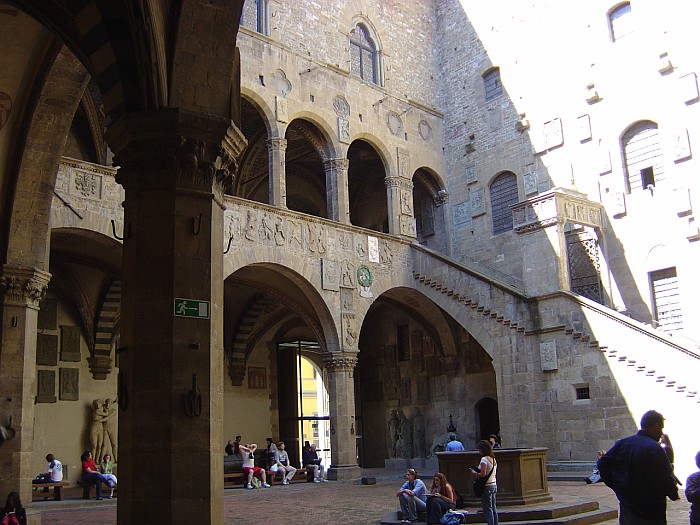
The interior is centered around a courtyard with porticoes on three sides, with piers and arcading. A picturesque covered staircase, built in the 14th century by Neri di Fioravante, leads to the upper loggia, by Tone di Giovanni (1319). The walls of the courtyard are covered with dozens of coats of arms of the various Podesta and Giudici di Ruota. Since 1859 the place has been the site of the Museo Nazionale which contains Renaissance sculpture and masterpieces of the minor arts from varying periods.
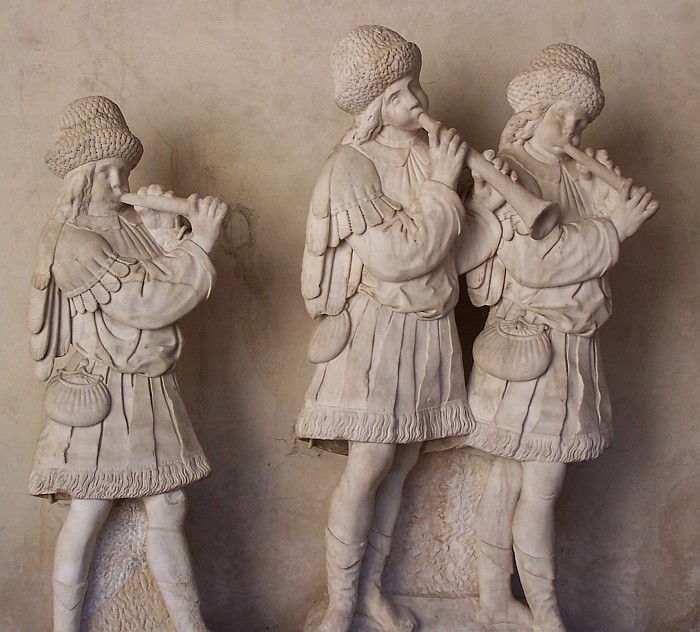
The large 14th century hall on the first floor displays some works by Donatello (1386-1466) including the early marble David, the St. George moved to this location from the niche in Orsanmichele, the more mature and ambiguous bronze David, the Atys. and the Marzocco, originally installed on the battlements of Palazzo Vecchio. The works of the master are surrounded by the most delicate works of his pupils Desiderio da Settignano (c. 1430-1464) and Antonio Rossellino (c. 1427-1479).
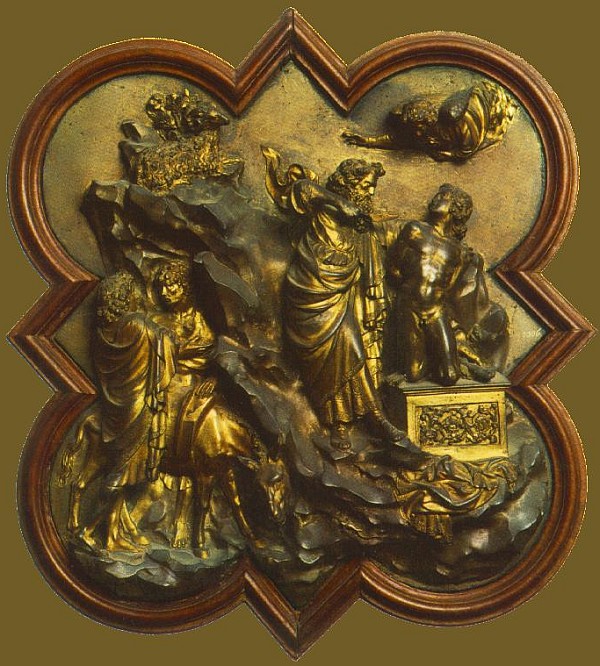
Sacrifice of Isaac by Ghiberti, 1401 bronze relief
The collection also includes the two panels entered by Lorenzo Ghiberti and Filippo Brunelleschi for the Baptistery door competition of 1401. The Renaissance repertoire comprises the glazed terracottas by Luca della Robbia (c.1400 - 1482) that include a very extraordinary group of Madonna with Child.

Madonna with Child, Michelangelo
The rooms on the ground floor exhibit Tuscan 16th century works, focusing in particular on four masterpieces by Michelangelo (1475-1564): Bacchus, the relief representing a Madonna with Child, Brutus and David-Apollo. The assortment is then followed by works of Andrea Sansovino (14601529), Jacopo Sansovino (1486-1570), Baccio Bandinelli (1488- 1560), Bartolomeo Ammannati (1511-1592), Benvenuto Cellini (the model of Perseus and the small bronze sculptures were moved to this location from the Loggia dell'Orcagna), down to Giambologna (1529-1608) with his admirable Mercury. The bronze animals that were originally placed in the grotto of the Medici villa of Castello are now displayed on the staircases.
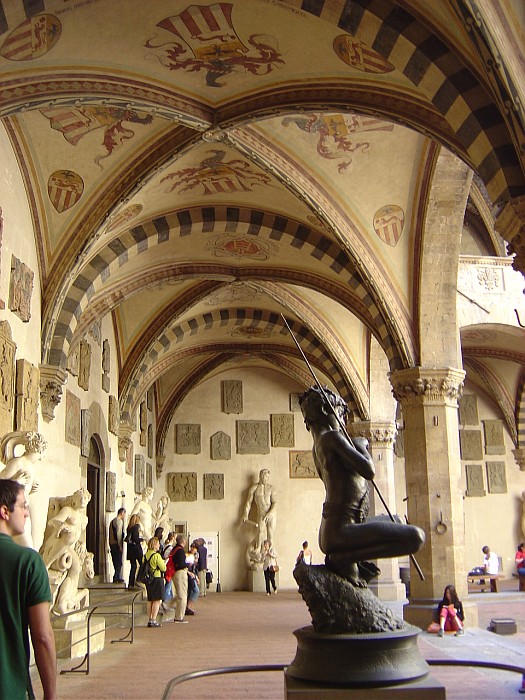
The museum stores however many other treasures: fine works of art enriched by the Carrand, Ressman and Franchetti collections comprising decorative or "minor" arts are distributed among the several rooms of the Palace, both on the first and second floor. From ivories that include several Roman and Byzantine examples, down to medieval glazes and Limoges porcelain from German and French gold works, Renaissance jewels down to Islamic examples of damascened bronze; from grand ducal collections down to Venetian glass. The museum displays several treasures including very unique panel pieces and wooden sculptures. Of note are also the majolicas, arms and small bronze statues.
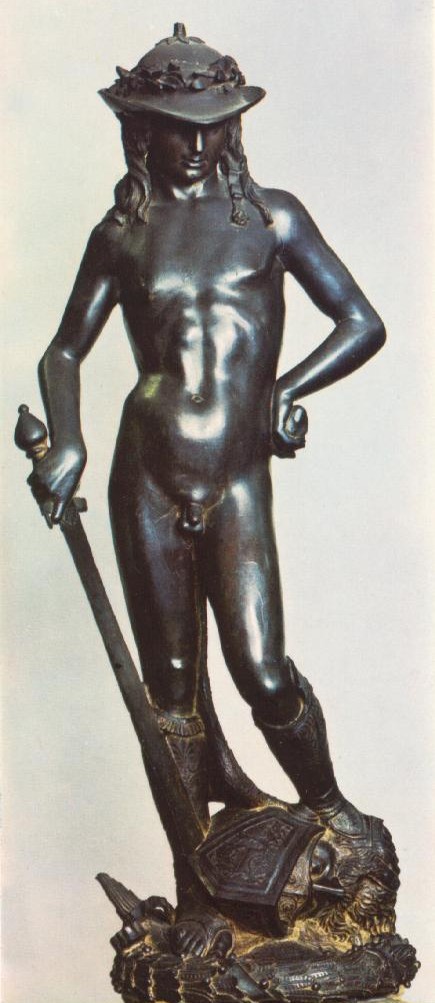
David, bronze by Michelangelo
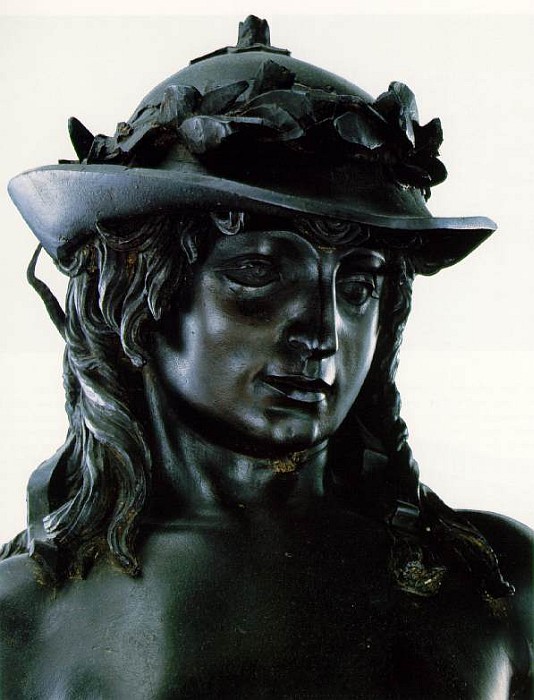
Two rooms on the second floor are dedicated to the glazed terracottas created by Andrea and Giovanni Della Robbia, besides displaying the bronze David and the Lady with Posy by Verrocchio in the room named after the artist, which displays also an extraordinary collection of busts of Florentine personalities made by some of the most important 15th century artists. One of the most important sculptures is the portrait of Costanza Buonarelli by Gian Lorenzo Bernini. It is also worth visiting the very lavish collection of medals belonging to the Medici family.
